Raspberry Pi HAT to interface with an electric vehicle's charge port and simulate AC or DC fast charging communication
Designed by evsec in GermanyNo shipping info available.
Set destination country to see options
Shipping to starts at
Free shipping is available to !
Ships from
This item does not ship to .
More Info
Sign up to get notified when this product is back in stock!
Overview This Raspberry Pi HAT (Raspberry Pi not included) makes it easy to interface your Raspberry Pi with an electric vehicle's charge port and lets you program your own AC or DC fast charging com…
Read More…This Raspberry Pi HAT (Raspberry Pi not included) makes it easy to interface your Raspberry Pi with an electric vehicle's charge port and lets you program your own AC or DC fast charging communication controller.
In detail it provides a generator for the Control Pilot (CP) signal according to SAE J1772 and IEC 61851 for AC charging.
For DC charging according to the Combined Charging System (CCS) it additionally contains a PLC Modem that is exposed to the Linux kernel as a virtual Ethernet interface.
NOTE: This is not a finished product for a charging station. It is intended to be used as a development and or experimentation platform for ISO 15118 and DIN SPEC 70121. It contains hardware interfaces and driver configuration for this purpose but it does not come with an application software for the charging protocol. However, there are open source projects that offer suitable software stacks:
For details see Application Note RiseV2G & open-plc-utils
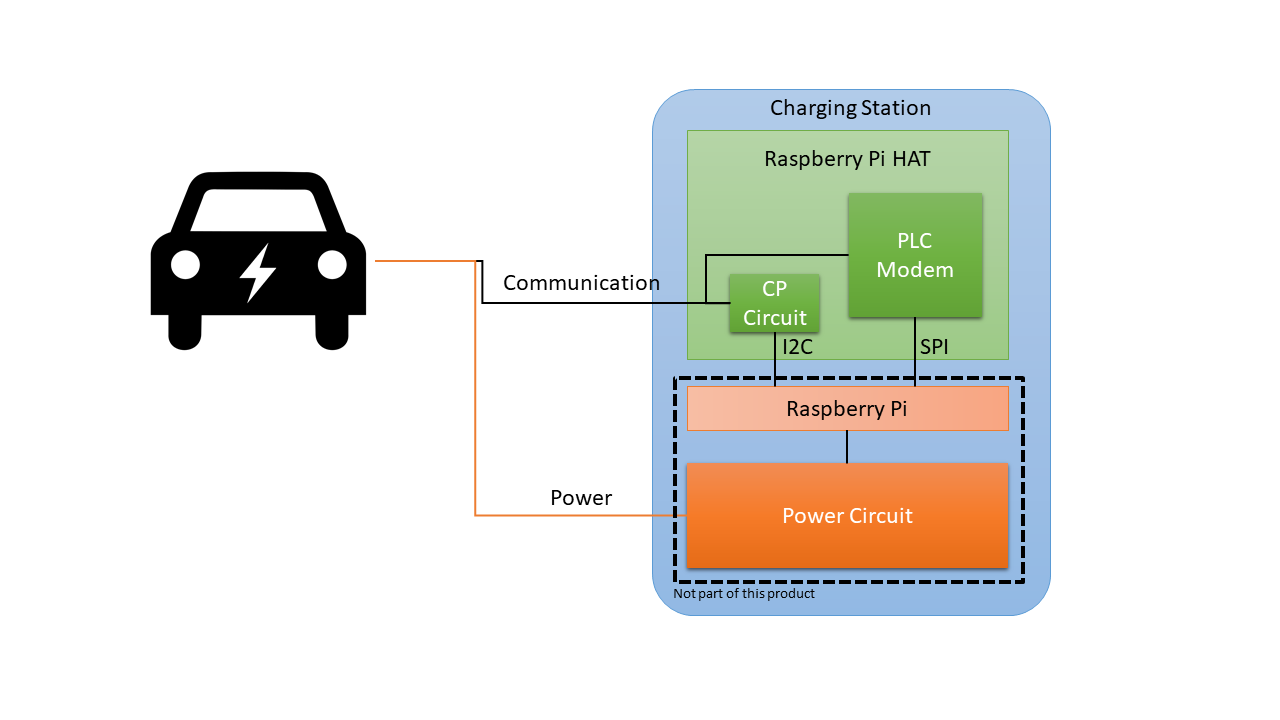
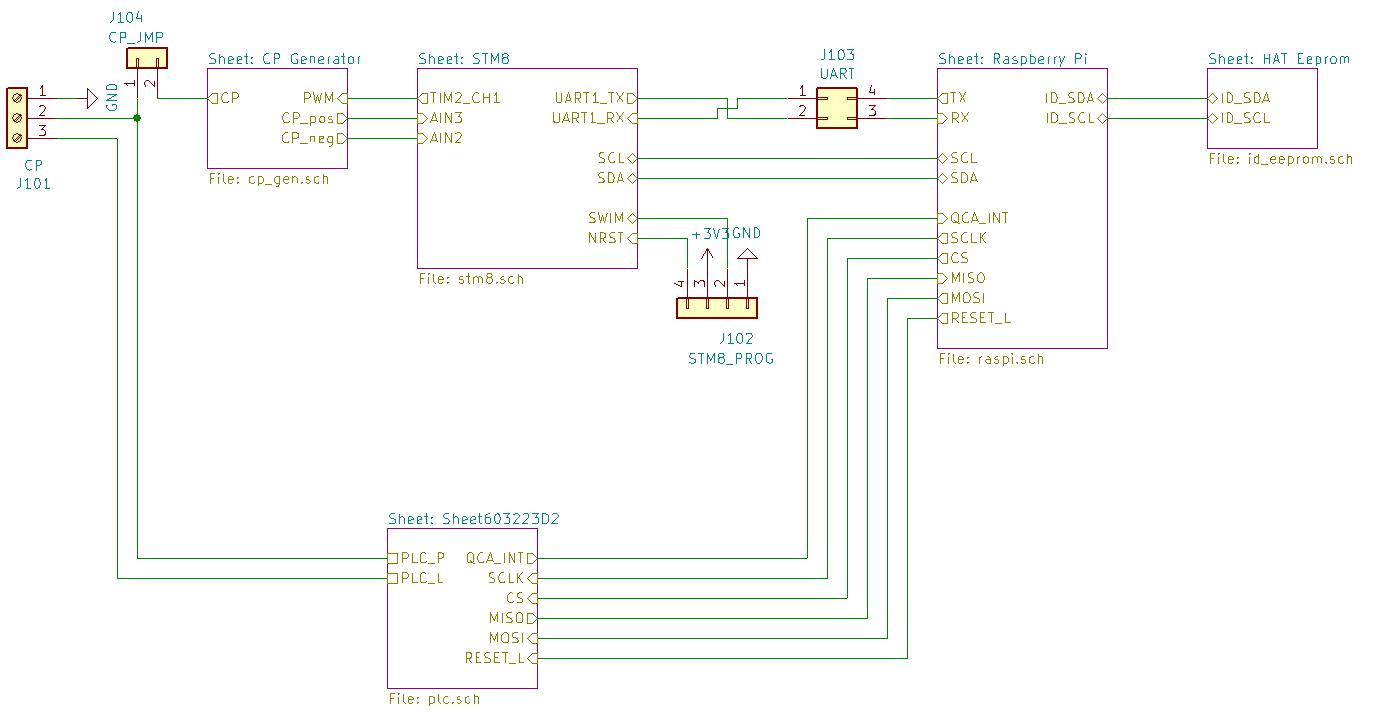
| Specification | |
|---|---|
| Supply Voltage | 3.3V and 5V from Raspberry Pi |
| Supply Current | 200mA typ, 300mA max |
This simple example use case shows how to wire the the Raspberry Pi in combination with this HAT to create a simple charging station.
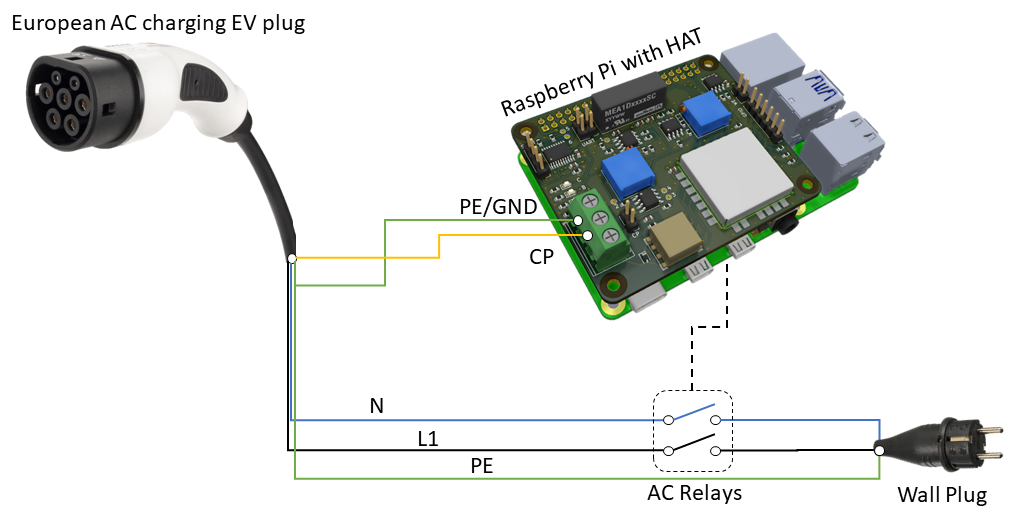
Here the Raspberry Pi could for example control when the car charges and how much power it consumes by controlling the CP signal or establishing a TCP connection if the car supports it.
The relays could also be controlled by the Raspberry Pi with a simple board like this: Amazon Link
If you are a security researcher it can also help you to do penetration testing and security analysis for the digital charging communication protocol of electric vehicles.
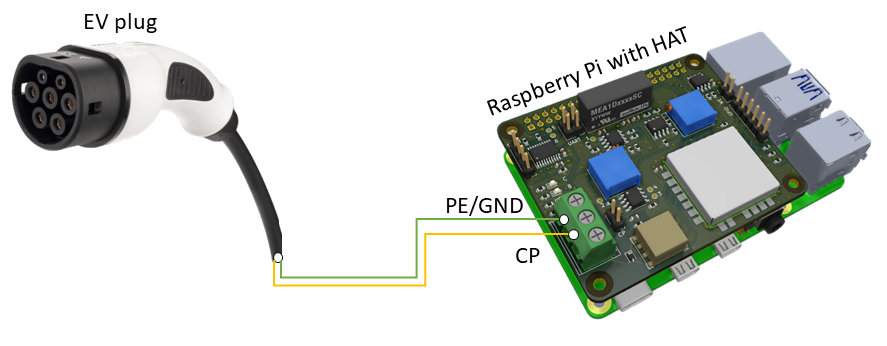
In order to analyze CCS digital charging Communication between a car and a charging station, the CP generator circuit can also be decoupled and this the PLC modem can be used to listen to the charging communication.

For details on how to do this exactly you can check out this github repository.
AC charging. Called this way since the energy coming into the car is in the form of Alternating Current. But since a battery can only be charged by DC or Direct Current the car must contain a converter circuit. This only requires a relatively simple PWM circuit (also called Control Pilot or CP) that signals the car how fast it can draw the energy from the grid in order to not overload it.
DC (fast) charging. Called this way because, the energy coming into the car is in the form of Direct Current, which can be used by the car’s battery without conversion. But because the power grid transports its energy in AC, the charging station must provide a conversion to matches the car’s DC battery. Now that this conversion is taken care of outside the car, these conversion circuits can be much bigger and more powerful, therefore providing fast charging capability.
AC charging standards: The most widespread standard is the IEC 61851 which most importantly describes a simple PWM method to signal the car how fast it can draw energy (see circuit diagram below). This is there to prevent the car from overloading household electric circuits and prevent fires. In addition, it also signals the charging station when a car is actually connected and wants to be charged. This helps prevent electric shock.
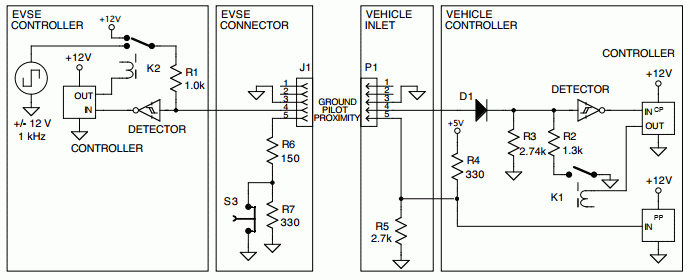
DC Charging standards: Unfortunately for DC charging there exist 3 major standards that are widely incompatible in regards to charging communication and plug types.
Tesla: This is a bit of a special case. Since Tesla has offered electric cars before most of the standards were officially implemented Tesla had to develop their own charging methods and plugs.
In the United States Tesla is still using their own plug and communicates via a proprietary CAN interface with their charging stations.
In Europe, Tesla also started out with their own proprietary charging interface but by now adopted to be CCS compatible. This means that Tesla can charge AC and DC at non Tesla public charging infrastructure as well as their own. Unfortunately, even though the plug is identical on Tesla and CCS fast charging stations, the communication protocol is still proprietary. It appears to be largely based on the CCS standards and therefore TCP/IP as screw-ups on Tesla's charge network have shown when it was temporarily possible to charge other cars at Tesla stations for free.
No country selected, please select your country to see shipping options.
No rates are available for shipping to .
Enter your email address if you'd like to be notified when HAT RasPi-EVSE can be shipped to you:
Thanks! We'll let you know when the seller adds shipping rates for your country.
| Shipping Rate | Tracked | Ships From | First Item | Additional Items |
|---|---|---|---|---|
|
:
|
No shipping info available.
Set destination country to see options
Shipping to starts at
Free shipping is available to !
Ships from
This item does not ship to .
More Info
Sign up to get notified when this product is back in stock!
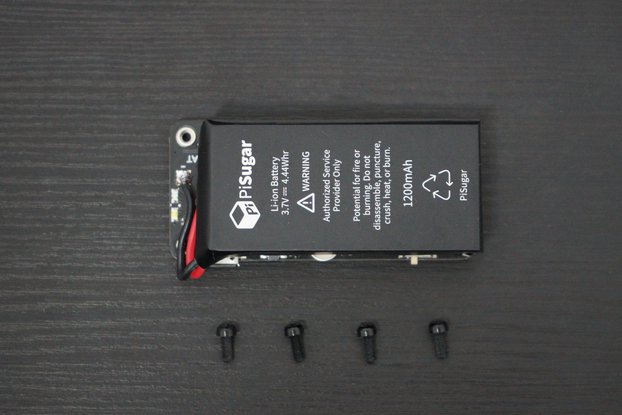
$35.99 $39.99
Free Shipping!
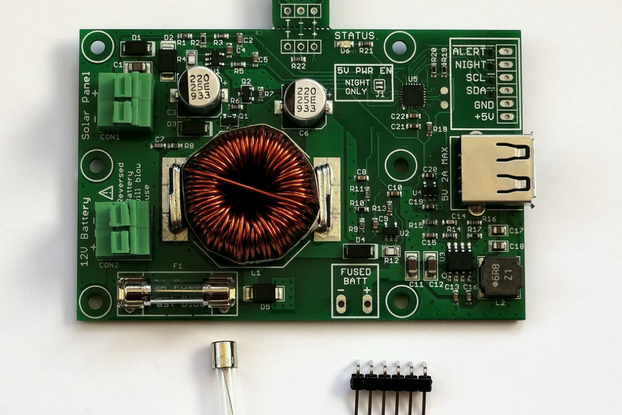
$39.95
Free Shipping!
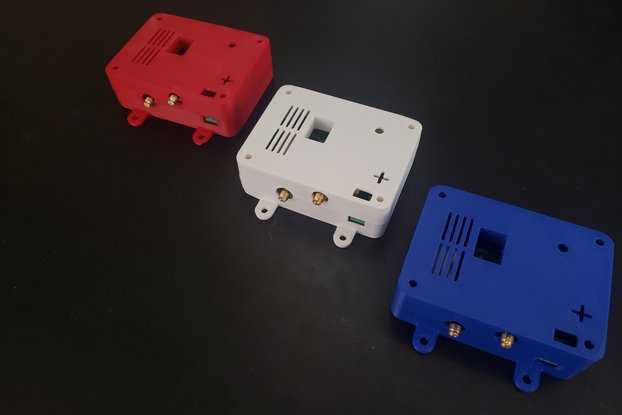
$69.00
Free Shipping!
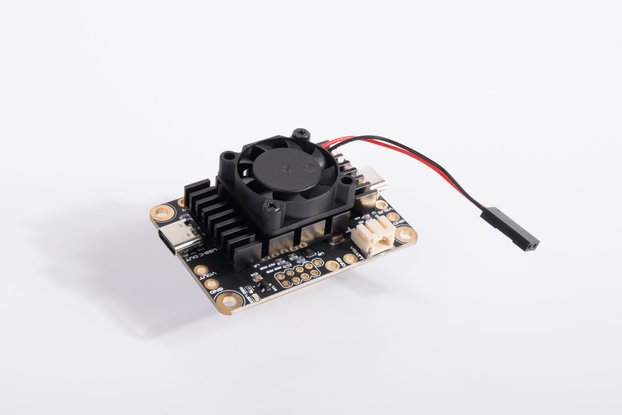
$50.40
Free Shipping!
By clicking Register, you confirm that you accept our Terms & Conditions
We recognize our top users by making them a Tindarian. Tindarians have access to secret & unreleased features.
We look for the most active & best members of the Tindie community, and invite them to join. There isn't a selection process or form to fill out. The only way to become a Tindarian is by being a nice & active member of the Tindie community!
